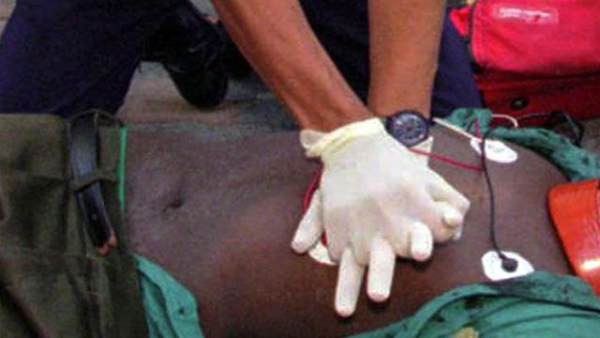
A multinational team of scientists reports that they have successfully sequenced 1,092 human genomes from individuals across the globe.
Their new study is the first to break the “1,000 genomes barrier.”
The researchers say the feat is a collegial effort to equip biologists and physicians with information that can be used to understand the normal range of human genetic variants so a patient’s diseased genome can be interpreted in a broader context.
“The DNA donors in the study were not known to have any diseases, so the study gives us the genomic background we need for understanding which genetic variations are ‘within the normal range,’” said Aravinda Chakravarti, Ph.D., professor of medicine and pediatrics and a member of the Institute of Genetic Medicine at the Johns Hopkins School of Medicine in a prepared statement. “With this tool, scientists now have a standard with which they can compare the genome of someone with diabetes, for example.”
Chakravarti said this feat will increase opportunities for understanding a patient’s disease and creating targeted, individualized treatment.
The international group of researchers sampled individuals from 14 different populations and sequenced their full genomes. The sample was based on their ancient migratory history and their genetic relationship to the other populations studied.
Within each population, healthy, unrelated donors were randomly chosen for blood draws. The samples were first transformed into cell lines that can be stored and grown indefinitely so that they will always be available for future studies.
The first human genome to be sequenced made clear that as much as 98.5 percent of human genetic material does not encode proteins as previously thought.
Scientists now know the role of some of the non-protein-coding regions, and that there is reason to suspect that at least some of it plays a role in various disease susceptibility and prevalence.
“The 1000 Genomes Project started at the beginning, with the whole genome and with no bias in the search for disease-related variants toward protein-coding genes,” Chakravarti said. “Regulatory sequences and sequences we still don’t understand were also catalogued, so this information widens the areas of the genome we can search when looking for disease-causing variants.”
The genetic variations the researchers found in the populations analyzed were categorized by how frequently they appeared in the individuals tested. The variants seen in more than five percent of the samples were classified as common. Samples below that were considered of low-frequency, or rare.
The 14 populations sampled included groups from Europe, Africa, East Asia and America. Most of the common variants had already been identified in previous studies and their frequencies varies little between ancestry groups.
The researchers found that among rare variants, the healthy people in their study possessed as many as 130 to 400 protein-altering variants, and 10 to 20 variants that destroy the function of the proteins they encode.
In the healthy people, they also found two to five variants that damage protein function, and one or two variants associated with cancer.
Chakravarti said that several factors allow people to survive with so many errors in our genome, including one that genes occur in pairs, but our bodies require one normal copy to work.
Another error is that a “redundant” gene elsewhere in the genome can sometimes compensate for a specific deficiency. Also, some deleterious genes are only turned on in response to certain environmental cues that a particular individual may never encounter.
“We are all walking natural experiments; some of our genes are switched off, some are active, whilst others are overactive,” said Professor Gil McVean of Oxford University, the lead author for the study. “Our research has found that each apparently healthy person carries hundreds of rare variants of genes that have a significant impact on how genes work, and a handful (from two to five) of rare changes that have been identified as contributing to disease in other people.”
The study was designed so that researchers have access to living cells from all the individuals whose genomes have been sequenced. Scientists can now study how differences in the biology of these cells correlate with genetic differences.
“There are variations that jump out from the data as looking ‘a bit bad for you’, for example mutations in regions that regulate genes are likely to be ‘bad news’ — possibly doing something dramatic to how cells behave,” said Dr Richard Durbin from the Wellcome Trust Sanger Institute, co-chair of the 1000 Genomes Project. “Using our data you can now look to see if natural selection has been getting rid of such mutations — giving you a clue as to how harmful these variants might be.”
The team’s work is already being used to screen for cancer genome mutations that might identify therapeutic pathways. It is also being used to interpret the genomes of children with developmental disorders.
“Our research shows that you can take localism much further: for example, even just within the UK, Orkney islanders will have different variations from mainlanders, and will be different again from those from other nearby islands,” McVean added. “In the future we would like to reach the scale of having a grid of individuals giving us a different genome every couple of square kilometers but there is a long way to go before we can make this a reality.”
Sir Mark Walport, Director of the Wellcome Trust remarked that it is remarkable we have gone from completion of the first human genome sequence in 2003, to sequencing more than 1,000 in less than a decade.
“This study is an important contribution to our understanding of human genetic variation in health and disease and the DNA sequences are freely available for analysis and use by researchers,” Walport said.
The next phase of the project will include as many as 3,000 individuals, according to Dr. Fuli Yu, assistant professor in the Baylor College of Medicine Human Genome Sequencing Center.
“The impact of this project will be huge,” said Yu. “Here we have information on nearly 1,100 people, including their rare and common single nucleotide polymorphisms (SNPs) along with insertions and deletions of the genetic material and large structural variations in the DNA itself.”
The researchers reported their findings in the journal Nature.
Source:




 Doctors may soon have two new drug options for patients with hepatitis C, just as the liver-destroying virus becomes a major public health concern for millions of baby boomers.
Doctors may soon have two new drug options for patients with hepatitis C, just as the liver-destroying virus becomes a major public health concern for millions of baby boomers.




 London may be famed for its historic sites, double-decker buses and West End shows, but it now has a more dubious distinction: It has become the tuberculosis capital of Western Europe.
London may be famed for its historic sites, double-decker buses and West End shows, but it now has a more dubious distinction: It has become the tuberculosis capital of Western Europe.
